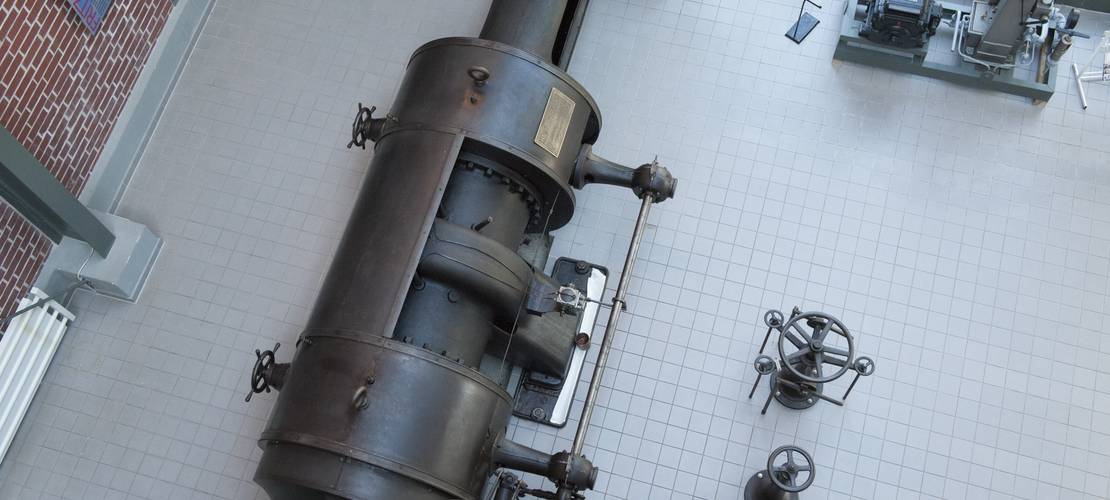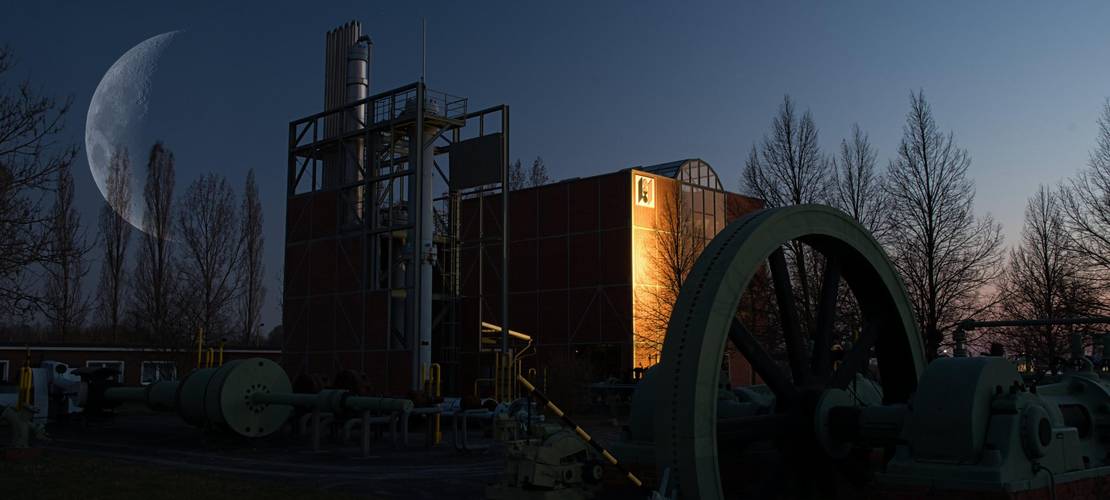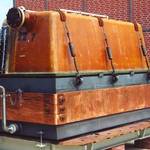Chloralkali Electrolysis...
...with different cell types
Chloralkali electrolysis is the most important electrochemical process in large-scale inorganic industry. Chlorine is used as a basic material for a large number of important products such as polyvinyl chloride (PVC) and numerous other plastics. In addition, chlorine is an auxiliary material for a large number of chemical reactions and syntheses and is used in the production of medicines, crop protection agents and dyes. At the Buna plant in Schkopau, chlorine was produced in old plants using the amalgam process.
Characterization: The electrolysis cell on display operated according to the mercury process and was used to produce chlorine and caustic soda.
Manufacturer: Proprietary development of Buna-Werke Schkopau in cooperation with Chemieanlagenbau Leipzig-Grimma
Year of manufacture: 1964
Operational use: 1964-1990 at the Buna plants
Function: Recovery of chlorine and caustic soda by electrolysis of aqueous sodium chloride solution, whereby hydrogen was automatically produced as an easily settleable by-product.
Other types of electrolysis cells are exhibited in our electrolysis complex, such as the diaphragm cell and the membrane cell.
Come by and receive detailed information from our museum guides.














